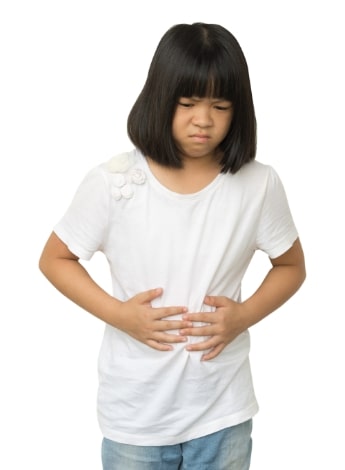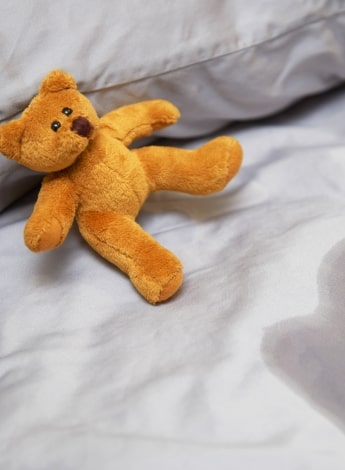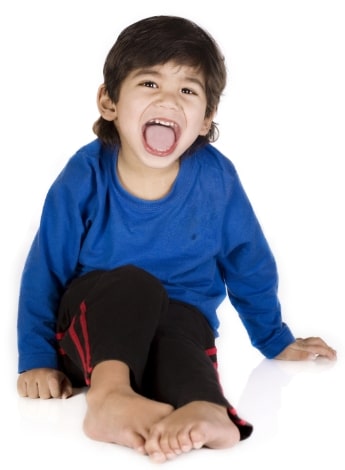
Physiotherapy and paediatric incontinence

Kate Tavendale, Amelia Moir and Ethan Gannon present five discussion points about the role of physiotherapy in managing paediatric incontinence.
1. Treating the bowel first significantly reduces bladder dysfunction

Treatment for constipation significantly reduces paediatric bladder incontinence.
No matter the age of the client, when working with bladder and bowel dysfunction, it is always advisable to optimise bowel function first before starting treatment on the bladder.
For children with combined bladder and bowel dysfunction, treatment for constipation results in a 66 per cent improvement in post-void residual bladder volumes, an 89 per cent resolution of daytime urinary incontinence, a 63 per cent resolution of bedwetting and a reduction in the frequency of urinary tract infections (Dohil et al 1994, Loening-Baucke 1997).
Functional constipation, the term used to define constipation once organic causes have been ruled out, represents 90 per cent of childhood constipation (Mugie et al 2011).
Functional constipation could be triggered by the child passing a hard, painful motion, which leads them to withhold the next motion and then the painful cycle begins.
Over time, the continued stool retention creates an extended rectum and then softer stools begin to leak out around the harder motion (this is referred to as overflow faecal incontinence).
The child will eventually lose rectal sensation and a normal urge to defecate (Mugie et al 2011, Scott et al 2011).
Treatment involves education about normal bowel function and good daily habits, a regular laxative routine and correcting defecation dynamics.
Physiotherapists can use transabdominal ultrasound as a non-invasive reliable outcome measure to view the transverse rectal diameter, with a measure greater than 30 millimetres significantly found in children with constipation (Burgers et al 2013).
2. A clinician’s communication style influences the treatment outcomes of paediatric incontinence
Whale et al (2017) explored the clinical care experiences of young people with continence problems and reported, ‘For all participants, the most important factor that influenced their appointment experiences was the communication style used by the clinician, specifically, whether the clinician used patient-centred communication and age-appropriate language.’
When a patient feels comfortable enough to answer questions truthfully, it will greatly improve treatment outcomes.
The ability to clarify when the incontinence is occurring, along with the frequency, the amount and how this is affecting the patient’s daily life, helps to guide treatment and create goals for both the patient and the physiotherapist.
Focusing treatment on the child and making sure that they are central to their own care helps facilitate better communication, better patient understanding and greater patient autonomy and promotes successful behaviour change and illness management (Whale et al 2017).
3. Overactive bladder is a common cause of paediatric incontinence
Overactive bladder accounts for approximately 58 per cent of children with daytime urinary incontinence (Chang et al 2017).
It is defined as urinary urgency, usually accompanied by frequency and nocturia, with or without urinary incontinence, in the absence of urinary tract infection or other obvious pathology (Austin et al 2014).
Parents are often frustrated as they witness their child crouch down or freeze before urgently running to the toilet, often having an accident on the way.
The child is equally frustrated as they had no prior warning that they were going to urinate.
The International Children’s Continence Society recommends urotherapy as a first-line treatment for children with incontinence (Maternik et al 2015).
Urotherapy refers to non-pharmacological and nonsurgical interventions such as education on good bladder and bowel habits, lifestyle advice, instruction on the use of bladder or bowel diaries, pelvic floor muscle training, behavioural modification and neuromodulation (Maternik et al 2015).
Transcutaneous electrical nerve stimulation offers a new way to conservatively manage overactive bladder in both the adult and the paediatric populations.
It can be performed over the sacral nerve or the posterior tibial nerve and has been shown to be more effective than oxybutynin (a commonly prescribed anticholinergic medication) (Casal-Beloy et al 2021).
4. Bedwetting might resolve with time but treatment should still be considered

Although bedwetting often resolves spontaneously, treatment should be considered for children over six.
Bedwetting, also known as nocturnal enuresis or just enuresis, can be embarrassing for the child and distressing for their carers.
Approximately 5–10 per cent of seven-year-olds suffer from enuresis (Neveus et al 2020), with boys 2–2.5 times more likely to wet the bed than girls (Shreeram et al 2009).
Once children reach adolescence, these gender differences diminish, with a general prevalence of 2.3 per cent from age 16 onwards (Bower 2015).
Although spontaneous resolution is frequent, treatment should be considered for children over the age of six (Neveus et al 2020).
Persistent bedwetting beyond the age of seven years may be due to a number of factors, including underlying constipation; nocturnal polyuria, in which the kidneys produce large volumes of urine at night; difficulties in storing urine, such as reduced bladder capacity or an overactive bladder; and the brain not being adequately aroused by bladder signals.
Bedwetting alarms should be offered as a first-line treatment to all children and adolescents with bedwetting.
The use of alarms requires long-term commitment from both the young person and their carers; however, they are shown to have high long-term success rates (National Clinical Guideline Centre 2010).
5. Comorbidities increase the likelihood of childhood incontinence
Continence requires the maturation of multiple systems.
When we begin toilet-training, we are learning to initiate our void at different bladder volumes as well as to suppress the urge to void at inappropriate times.

It may be more difficult or take longer for children with comorbidities to be continent.
We need to be able to pay attention to our body’s urge to void and defecate.
We need to have fine and gross motor skills in order to get to the toilet, sit on the toilet, dress and undress and wipe afterwards.
With all of this in mind, it makes sense that if a child already has sensory, cognitive, social and/or movement challenges, it may be more difficult or take longer for them to be continent.
A consensus paper produced by the International Children’s Continence Society reviewed three neurodevelopmental disorders—attention-deficit/hyperactivity disorder, autism spectrum disorder and intellectual disability—and considered how continence treatment should be adapted and modified to help achieve better success in this patient group (Von Gontard et al 2022).
The prevalence of constipation, faecal incontinence and urinary incontinence is higher in children with cerebral palsy (Ozturk et al 2006).
Many children with cerebral palsy do have the capacity to be continent.
The probability of achieving urinary continence improves with higher intellectual capacity and less significant motor impairments (Vande Velde et al 2018).
Click here for an infographic poster version of this article.
>> Kate Tavendale is an advanced practice physiotherapist at the Physiotherapy Continence Service, Queensland Children’s Hospital, Brisbane.
>> Amelia Moir APAM is an advanced practice physiotherapist at the Physiotherapy Continence Service, Queensland Children’s Hospital, Brisbane.
>> Ethan Gannon is a senior physiotherapist at the Physiotherapy Continence Service, Queensland Children’s Hospital, Brisbane.
- References
-
Shang-Jen Chang,Erik Van Laecke,Stuart B. Bauer,Alexander von Gontard,Darius Bagli,Wendy F. Bower,Catherine Renson,Akihiro Kawauchi,Stephen Shei-Dei Yang (2017). Treatment of daytime urinary incontinence: A standardization document from the International Children's Continence Society. Neurol Urodynamics, 36, 43-50. https://doi.org/10.1002/nau.22911
Burgers R, de Jong T, Benninga M (2013). Rectal Examination in Children:Digital Versus Transabdominal Ultrasound. J Urol Vol 190(2):667-672. doi: 10.1016/j.juro.2013.02.3201
Dohil R, Roberts E, Jones K, Jenkins H (1994) Constipation and reversible urinary tract abnormalities. Archives of Disease in Childhood. 70: 56-57
Loening-Baucke V. (1997) Urinary incontinence and urinary tract infection and their resolution with treatment of chronic constipation of childhood. Pediatrics;100 92 Pt 1):228-232.
Mugie SM, Di Lorenzo C and Benninga MA (2011). Constipation in childhood. Nat Rev Gastroenterol Hepatol; 8: 502.Scott SM, van den Berg MM and Benninga MA (2011) Rectal sensorimotor dysfunction in constipation. Best Pract Res Clin Gastroenterol; 25: 103.
Whale K, Cramer H, Wright A, Sanders C, Joinson C. (2017) ‘What does that mean?’:a qualitative exploration of the primary and secondary clinical care experiences of young people with continence problems in the UK. BMJ Open;7:e015544. Doi:10.1136/bmjopen-2016-015544
Austin P, Bauer S, Bower W, et al (2014) The Standardization of Terminology of Lower Urinary Tract Function in Children and Adolescents: Update Report from the Standardization Committee of the International Children’s Continence Society. J Urol ;191:1863–5; e13
Casal-Beloy I, Garcia-Novoa M, Gonzalez M, Nebril B, Argibay I (2021) Transcutaneous scral electrical stimulaton versus oxybutynin for the treatment of overactive bladder in children J Pediatr Urol; 17(5):644.e1-644.e10. doi: 10.1016/j.jpurol.2021.06.011
Maternik M, Krzeminska K, Zurowska A. (2015) The management of childhood urinary incontinence Pediatric Nephrology Vol 30 (1):41–50
Shreeram, S., He, J. P., Kalaydjian, A., Brothers, S., & Merikangas, K. R. (2009). Prevalence of enuresis and its association with attention-deficit/hyperactivity disorder among U.S. children: results from a nationally representative study. Journal of the American Academy of Child and Adolescent Psychiatry, 48(1), 35–41. https://doi.org/10.1097/CHI.0b013e318190045c
Neveus T, Fonseca E, Franco I, Kawauchi A, Kovacevic L, Nieuwhof-Leppink N, Raes A, Tekgul S, Yang S, Rittig S (2020) Management and treatment of nocturnal enuresis – an updated standardization document from the International Children’s Continence Society. J Pediatric Urology 16(1) 10-19 https://doi.org/10.1016/j.jpurol.2019.12.020
Bower, W. F. (2015). Nocturnal enuresis in children (including refractory)...24th National Conference on Incontinence -- the Continence Foundation of Australia in association with the UroGynaecological Society of Australasia 25-28 November 2015 Melbourne, Victoria. Australian & New Zealand Continence Journal, 21(4), 102.
National Clinical Guideline Centre, (2010). Nocturnal enuresis: The management of bedwetting in children and young people . London: National Clinical Guideline Centre. Available from: [www.nice.org.uk]
Loening-Baucke V. (1997) Urinary incontinence and urinary tract infection and their resolution with treatment of chronic constipation of childhood. Pediatrics;100 92 Pt 1):228-232.
Von Gontard A, Hussong J, Yang S, Chase J, Franco I, Wright A (2022) Neurodevelopmental disorders and incontinence in children and adolescents: Attention-deficit/hyperactivity disorder, autism spectrum disorder, and intellectual disability – A consensus document of the International Children’s Continence Society. Neurology and Urodynamics 41:102-114. DOI: 10.1002/nau.24798
Ozturk, M., Oktem, F., Kisioglu, N., Demirci, M., Altuntas, I., Kutluhan, S., & Dogan, M. (2006). Bladder and bowel control in children with cerebral palsy: case-control study. Croatian medical journal, 47(2), 264–270.
Vande Velde, S., Van Renterghem, K., Van Winkel, M., De Bruyne, R., & Van Biervliet, S. (2018). Constipation and fecal incontinence in children with cerebral palsy. Overview of literature and flowchart for a stepwise approach. Acta gastro-enterologica Belgica, 81(3), 415–418.
-
© Copyright 2024 by Australian Physiotherapy Association. All rights reserved.





